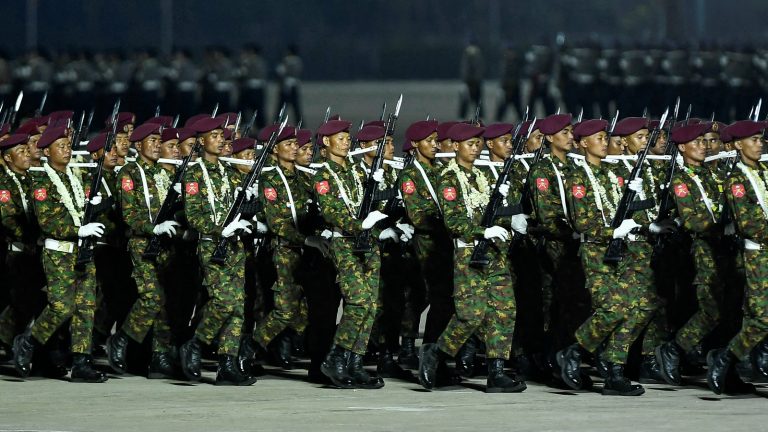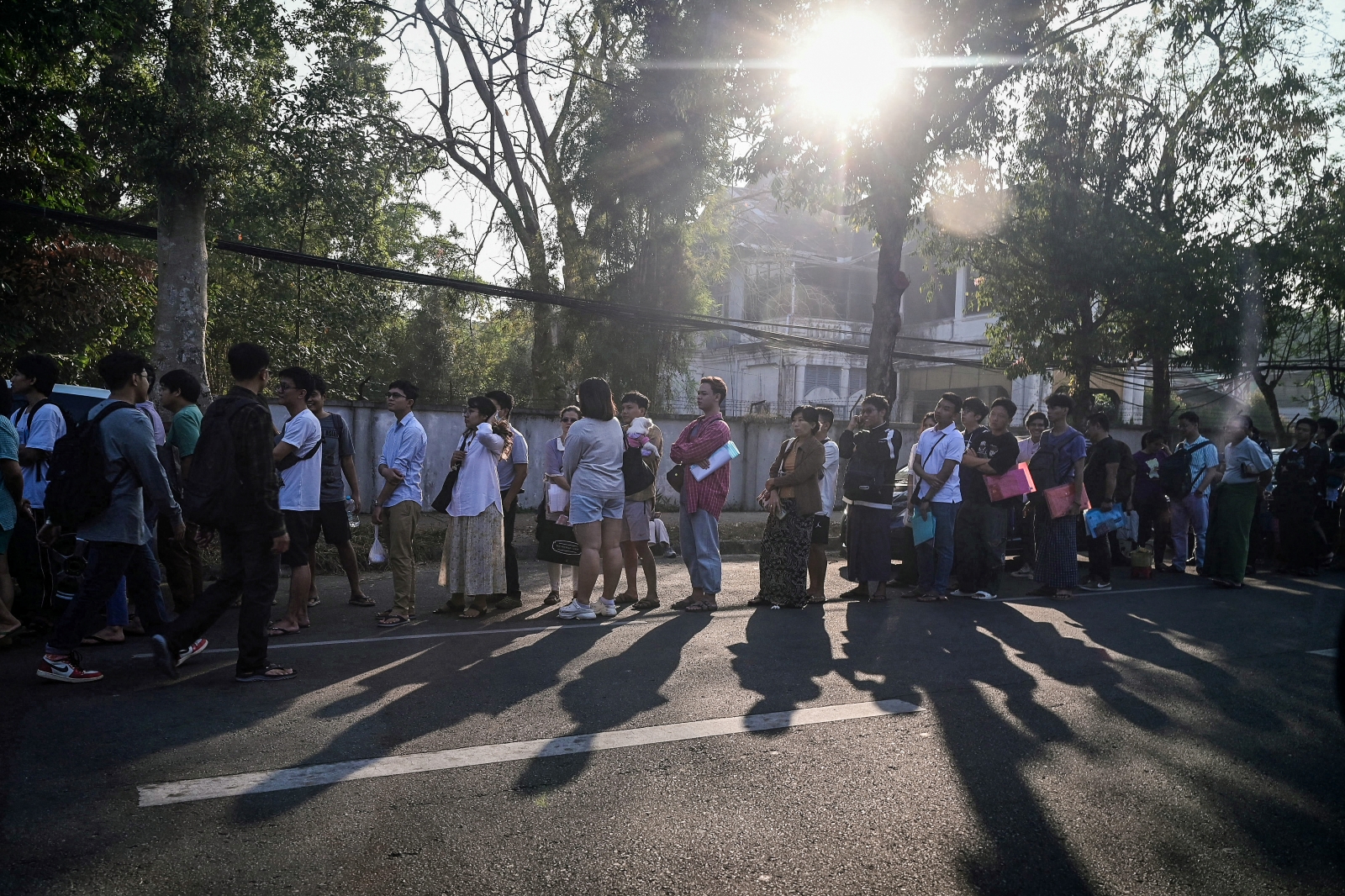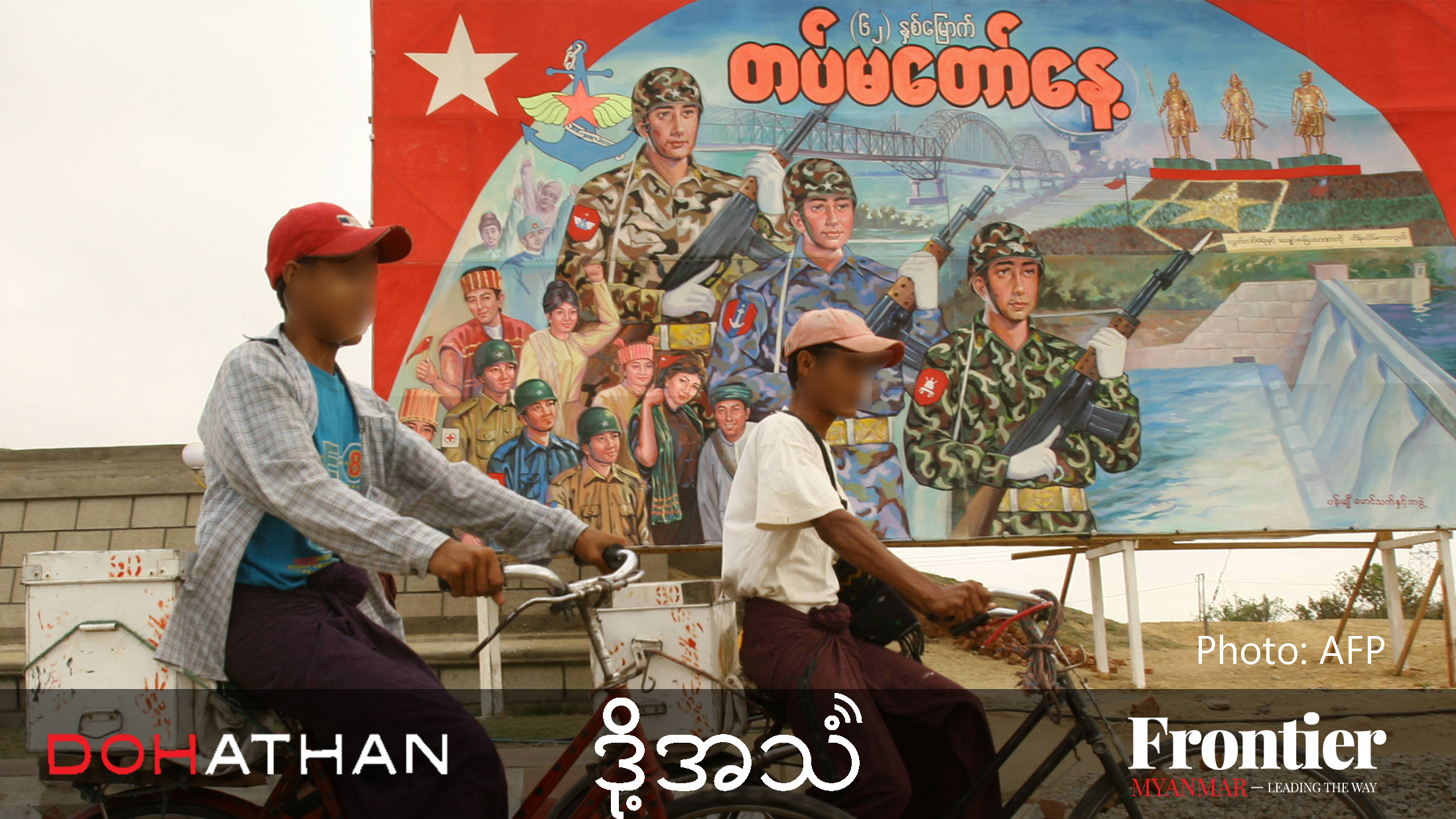The rift within the ruling Union Solidarity and Development Party started long before it began choosing candidates for the November 8 general election and the speculation about the political future of President U Thein Sein.

Thura Shwe Man speaking during the first conference of the Union Solidarity and Development Party (USDP) in Naypidaw. AFP PHOTO / Soe Than WIN
Under the 2008 Constitution, a vote in the Pyidaungsu Hluttaw decides the head of state from among three nominees for the vice-presidency. The candidate whose party wins the most seats has the best chance of becoming president and appointing the next government.
U Thein Sein has had little chance of being the USDP’s nominee for the vice-presidency, and therefore, the presidency, since May 2013 when he handed over his role as party chairman to his ambitious rival, parliamentary speaker Thura U Shwe Mann, who covets the role of head of state.
Strategy has played a big part in the struggle between the pair. It was evident when parliament in June approved an amendment to the Union Government Law that prohibited Union ministers and the President from using the name of their party during the election campaign.
The amendment was proposed by a USDP MP. It ensured that U Thein Sein and prominent core members of the USDP, such as President’s Office ministers U Soe Thane and U Aung Min, could not rely on the party’s considerable resources in the election campaign.
Support more independent journalism like this. Sign up to be a Frontier member.
U Thein Sein suffered another setback last month. Speaking after a parliamentary sitting on July 13, USDP secretary Thura U Aung Ko said U Thein Sein was not on the party’s list of election candidates.
Two strategies for U Thein Sein?
Section 60 of the constitution provides for the unelected Tatmadaw bloc in parliament to nominate a vice-presidential candidate who does not need to be an MP. The President has enjoyed the support of Tatmadaw MPs and there’s speculation it could choose him as its candidate, obviating his need to contest the election.
There’s also speculation that U Thein Sein has another strategy for regaining the presidency. It involves standing as an independent in Ayeyarwaddy Region’s Ngapudaw Township, his hometown constituency, where he enjoys considerable popularity and could expect to win easily. Such a scenario would pave the way for U Thein Sein to be re-elected with the support of his supporters within the USDP and some ethnic party members.
However, some analysts believe ethnic party members would be more likely to support the candidate proposed by the National League for Democracy. NLD leader Daw Aung San Suu Kyi has been seeking an agreement with ethnic parties not to contest the seats in which they field candidates.
Parliamentary speaker and USDP chairman Thura U Shwe Mann has also been careful to woo ethnic parties, promising their leaders that if he becomes president he will support their push for chief ministers to be chosen by state and regional assemblies rather than being appointed by the head of state. His pledge followed the defeat last month of a bill that would have enabled the state and regional hluttaws to appoint chief ministers.
Meanwhile, the USDP is yet to announce its choice for the presidency.
Party hardliner U Aung Thaung’s recent medical evacuation to Singapore with a cerebral haemorrhage means that the USDP has lost one of its key election strategists at a time when he is most needed. U Aung Thaung’s election strategy has focussed on rural areas. A supporter of Thura U Shwe Mann, U Aung Thaung has been linked to nationalist monk, the Venerable U Wirathu, who has a powerful influence over Buddhists in the rural heartland.
The situation is complicated by the USDP leadership blocking attempts by U Thein Sein loyalists U Aung Min and U Soe Thane to stand in safe seats in Kayah State where the party won every seat in 2010.
This raises the possibility of the President’s supporters, including U Aung Min and U Soe Thane, forming a group within the USDP that will call a special meeting of all party members to seek the re-election of U Thein Sein as the party’s chairman.
Army and USDP cooperation?
Yet another option for the USDP is an arrangement with military bloc MPs to support the Tatmadaw Commander-in-Chief Senior General Min Aung Hlaing for the presidency. However, it is far from clear how much support he has within the USDP.
The recent defeat in parliament of an attempt to extend the retirement age of government employees from 60 to 63 means that Senior General Min Aung Hlaing, who turns 60 this year, could well be a presidential candidate.
So we have a situation where Thura U Shwe Mann is known to aspire to the presidency, uncertainty over whether U Thein Sein will be able to contest the position, and Tatmadaw MPs could nominate either Senior General Min Aung Hlaing or the Amyotha Hluttaw speaker, U Khin Aung Myint.






